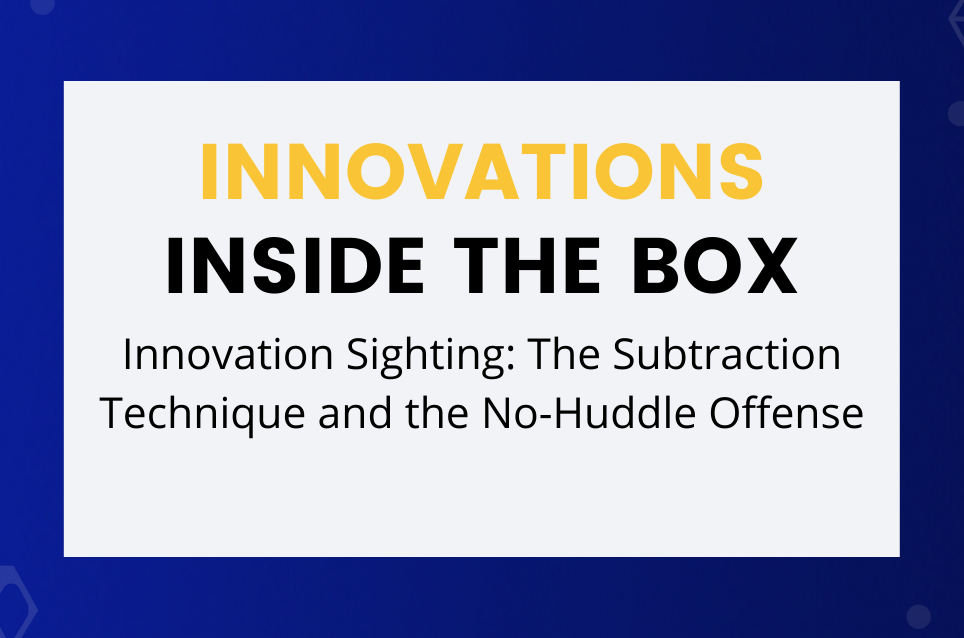Few activities are more iconic to American football than the huddle. Bill Pennington, in his New York Times article, “Ready, Set, Gone! The N.F.L.’s Disappearing Huddle” thoughtfully fills out the history, the heritage, and the slow disappearance of this classic practice. And while innovation is often thought of in connection to a tangible product, the emerging use of the “no-huddle offense” in football is an excellent example of innovation through the use of the innovation template known as The Subtraction Technique.
The Subtraction Technique is one of the five innovation methods in Systematic Inventive Thinking (SIT). It works by removing an element of the system that seemed essential to identify a new value or benefit. When it comes to the no-huddle offense, teams are removing the essential component, the huddle, and replacing it with hand signals and code words. The benefit? More time on the clock to advance the ball and elevate a team’s chance for a win.
As Pennington explains,
Huddles remain the pervasive norm, but increasingly, many are condensed to several harried seconds, as quarterbacks bolt to the line of scrimmage and rely on hand signals and code words to communicate a new play to teammates as they line up.
This season, some offenses have spent nearly half a game — 25 plays — without stopping to huddle. Many teams’ defensive units huddle even less often. As a trend, it is viewed as inevitable innovation, and most in the N.F.L. expect the pace to quicken in coming seasons, a transformational jolt to an old-style league.
Time will tell whether this innovative strategy will outlive the infamous huddle. But it’s a perfect example of how innovation through templates knows no boundaries.
To get the most out of the Subtraction Technique, you follow five steps:
- List the product’s or service’s internal components.
- Select an essential component and imagine removing it. There are two ways: a. Full Subtraction. The entire component is removed. b. Partial Subtraction. Take one of the features or functions of the component away or diminish it in some way.
- Visualize the resulting concept(no matter how strange it seems).
- What are the potential benefits, markets, and values? Who would want this new product or service, and why would they find it valuable? If you are trying to solve a specific problem, how can it help address that particular challenge? After you’ve considered the concept“as is” (without that essential component), try replacing the function with something from the Closed World (but not with the original component). You can replace the component with either an internal or external component. What are the potential benefits, markets, and values of the revised concept?
- If you decide that this new product or service is valuable, then ask: Is it feasible? Can you actually create these new products? Perform these new services? Why or why not? Is there any way to refine or adapt the idea to make it more viable?
Learn how all five techniques can help you innovate – on demand.





